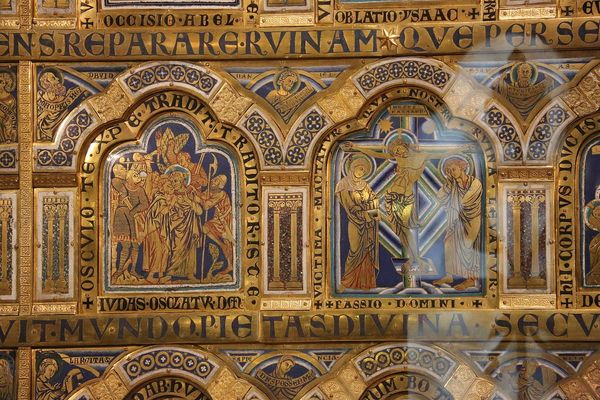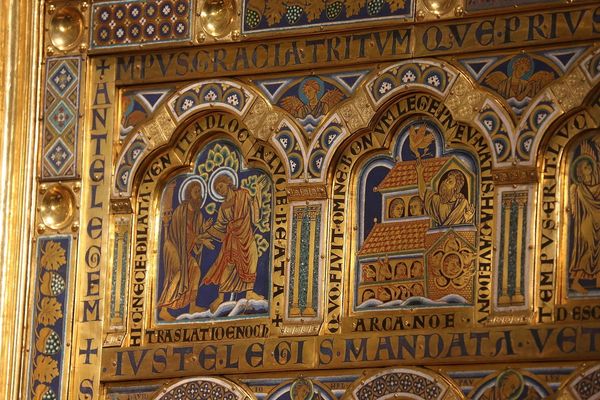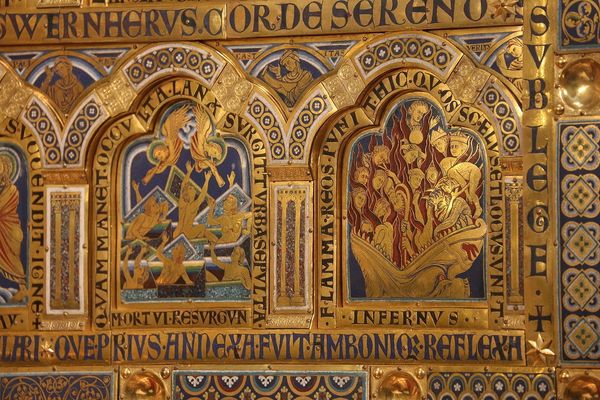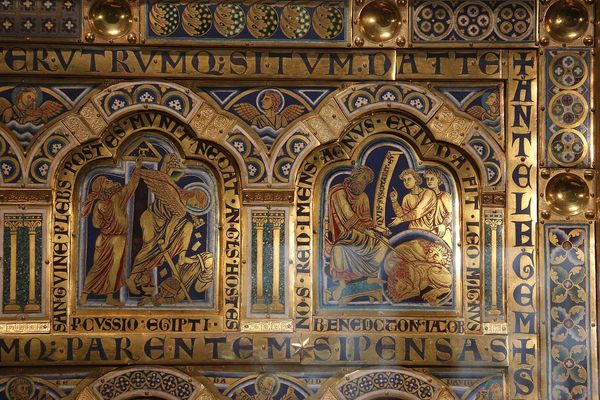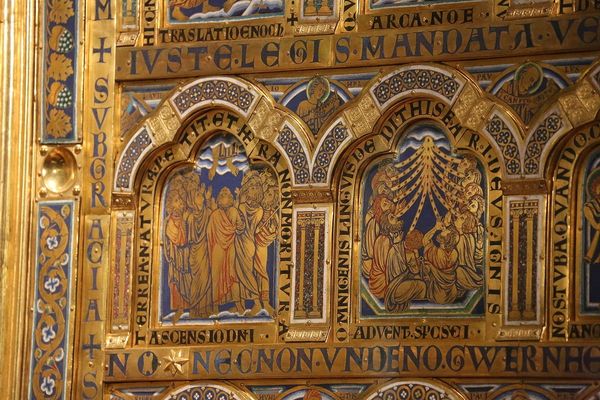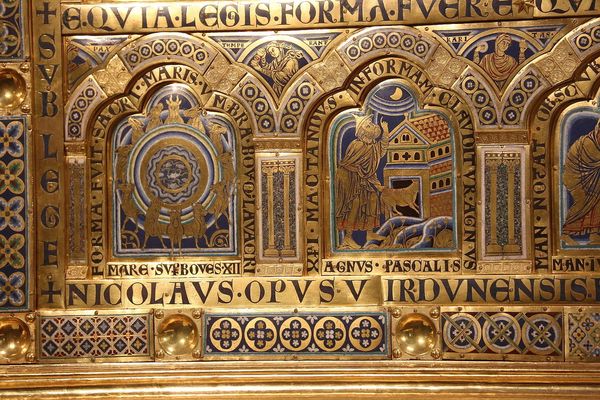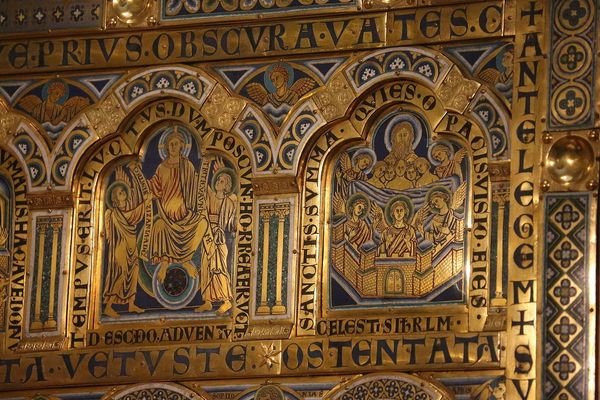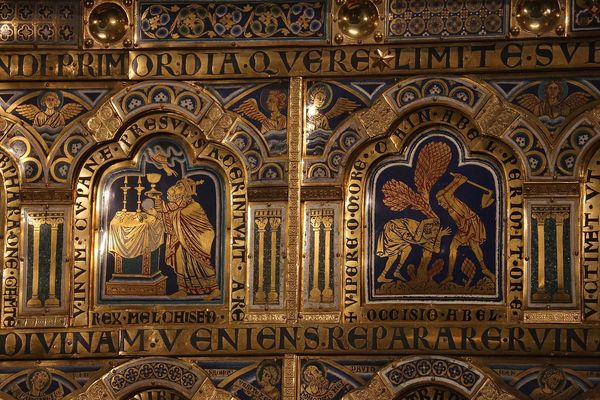
mosaic, carving, tempera, gold, relief, guilding, sculpture, architecture
#
mosaic
#
byzantine-art
#
medieval
#
carving
#
narrative-art
#
tempera
#
sculpture
#
gold
#
relief
#
guilding
#
sculpture
#
architecture
#
miniature
#
architecture
Copyright: Public domain
Editor: We're looking at the Klosterneuburg Altar, created around 1181 by Nicholas of Verdun. It's an elaborate piece using gold, tempera, mosaic, and various carving techniques. The overall impression is… intricately symbolic. What do you see in this piece, looking at its meaning beyond just the artistry? Curator: It's a remarkable synthesis of theology and visual culture. Look at the arrangement: images from the Old Testament paired with those of the New Testament. Verdun is using typology, a way of understanding the Bible where Old Testament events prefigure New Testament ones. He's creating a visual argument about the continuity of God's plan. Do you notice how the figures, even when rendered in gold relief, retain a certain emotional weight? Editor: Yes, particularly the panels with figures carrying objects on their shoulders. The poses are stooped and strained; I see burdens being carried, perhaps literal or symbolic? Curator: Precisely. Think about what burdens those might represent, and the cultural memory attached to them. The "Spoils of Canaan," for example, prefigures the Eucharist. Verdun asks us to contemplate the weight of tradition, law, and ultimately, salvation. It’s about cultural continuity made vivid through symbolic representation. How does understanding these connections change your view of the altar as a whole? Editor: It gives the altar a deeper purpose; it's more than decoration; it's actively teaching and connecting ideas across centuries. I hadn't appreciated how meticulously each image carries such cultural significance and symbolic value. Curator: Exactly. Verdun’s work is not merely decorative, but a profound visual sermon intended to shape the viewer's understanding of their place within a much larger narrative.
Comments
No comments
Be the first to comment and join the conversation on the ultimate creative platform.
